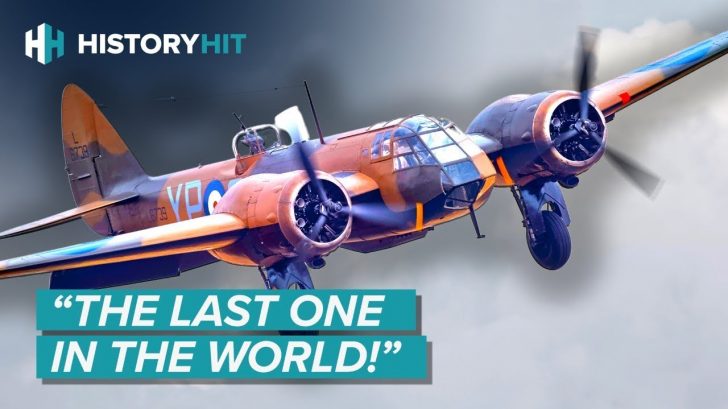Luke Tomes and Louee Dessent went to the Battle of Britain Airshow with one goal in mind – to find the rarest and most unique aircraft that ever saw service in WWII. Here are the planes they found:
1. Bristol Blenheim

The Blenheim was one of Britain’s most used bombers in the earlier stages of the war. It started development as a civil airliner, but the British Air Ministry became impressed by its performance during its maiden flight in 1935, leading to the ministry ordering a modified variant for the RAF to be used as a bomber.
When it entered service, the Bristol Blenheim became one of the first British planes with all-metal stressed-skin construction, retractable landing gear, powered gun turrets, flaps, and variable-pitch propellers.
2. Western Lysander

When the Lysander was designed, the engineers envisioned an aircraft adept at spotting artillery positions and reconnaissance missions. However, the Western Lysander did not get its fame by looking out for artillery movements—instead, the aircraft’s Mk.III variant was used for “Special Duties” – transporting Allied agents in and out of Europe.
For this particular role, the Lysanders were fitted with a fixed ladder over the port side to access the rear cockpit and a large drop tank under its belly. They were also painted matte black for extra cover and would often only fly within a week of a full moon.
3. Fiat CR.42 Falco

The CR.42 was a single-seat biplane fighter introduced to service in 1939. Despite having a biplane configuration, the Falco was still a respectable aircraft, according to Allied pilots. They were remarkably fast for a biplane, achieving speeds up to 270 mph at 12,500 ft while also having excellent flight characteristics. In addition, the biplane had a sleek, modern design that came with a strong steel and alloy structure.
But like every aircraft, the CR.42 also had weaknesses. For an airplane built to fight, the CR.42 was still introduced to service with just two machine guns – a 7.7 and 12.7 mm – for armament.
4. Fairey Swordfish

Considered by many as one of the unsung heroes of WWII, the Swordfish had quite a remarkable string of successful operations over Europe despite its outdated design. The Swordfish was initially introduced as a fleet attack aircraft but later shifted to the anti-submarine role.
Its most notable accomplishment came in May 1941, when a fleet of Swordfish landed several torpedo hits against Germany’s Bismarck battleship. The first torpedo hit on May 24, 1941, forcing Bismarck to use evasive maneuvers, slowing it down. Two days later, another Swordfish strike successfully hit the ship, which jammed its rudders, rendering it unmaneuverable. Because of these strikes, the Royal Navy was able to sink Bismarck within 13 hours.
5. Cierva C.30-A Autogyro

Designed by the creator of the first autogyro, the Cierva C.30-A became the first autogyro with an engine geared to drive the rotor blades during takeoffs. When the Second World War started, these autogyros were used to calibrate RAF radar stations throughout the United Kingdom.
This made the aircraft valuable until it was slowly phased out during the war.



